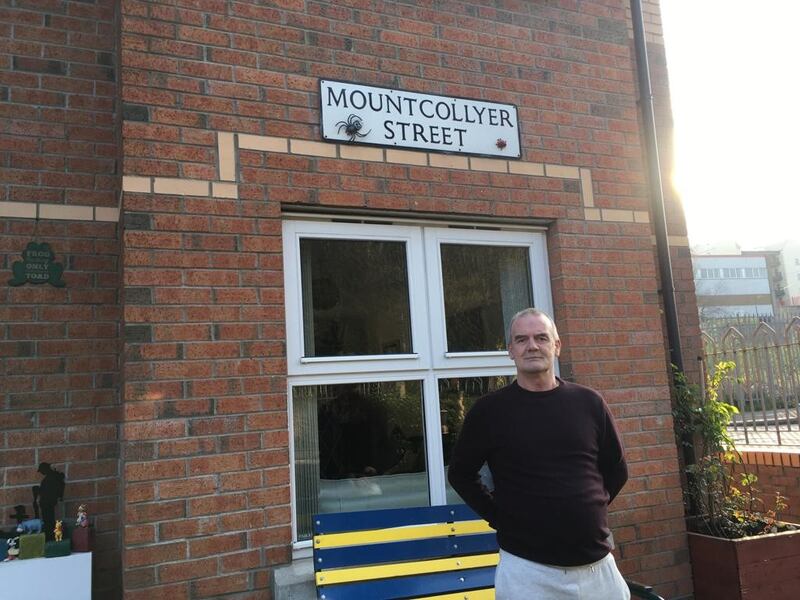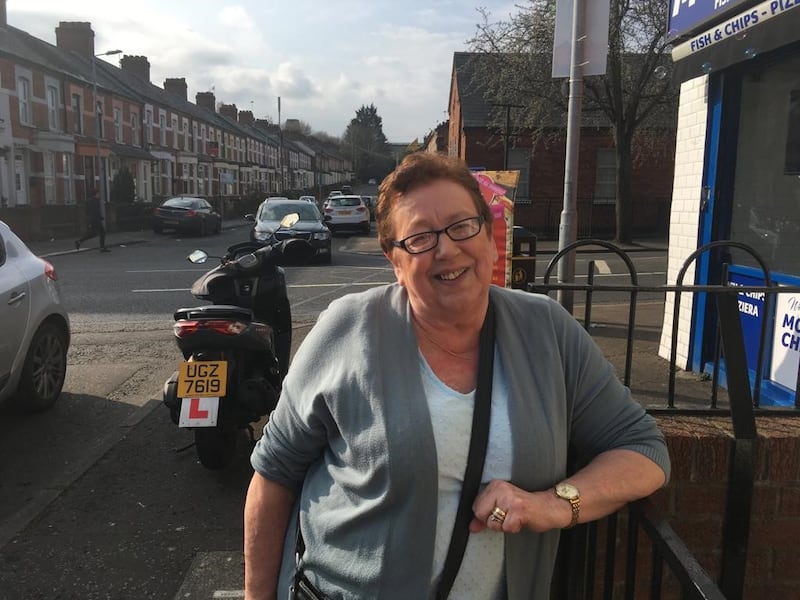A derelict patch of wasteland in one of Northern Ireland's most socially deprived areas is now at the centre of an Oscar-winning film, and residents credit Kenneth Branagh for bringing "a wee bit of joy" to north Belfast.
In the immediate aftermath of the director receiving the best original screenplay award for his semi-autobiographical movie, Belfast, the site of his childhood home at 96 Mountcollyer Street has taken on new significance.
The street is just off the Limestone Road close to Tigers Bay, the small loyalist area that dominated headlines last summer over a controversial bonfire at an interface flashpoint that two Stormont ministers attempted to remove through the courts. They failed.
Tattered paramilitary flags fly from lamp posts, and loyalist murals are painted on gable walls in streets blighted by decades of sectarian violence, unemployment and social problems.
But on an unseasonably hot March day, neighbours and business owners are happy to talk about their pride in Branagh and the “lift” the film’s success has given them during a cost-of-living crisis and political instability.
Florist Lesley-Ann Brown is pulling down the shutters early on her York Road shop after a busy weekend of Mother's Day trading but reopens to share the story of her family's connection to the Oscar winner.
"It's so good because it shows Belfast in a different light and how far we've come. We've turned a corner after the dark days"
"My gran, Harriet Breen, ran a shop called Breen's in Glencollyer Street and also worked with [Branagh's] mother, Frances, in the old Jennymount mill," she says.
“As a child, Kenneth would have been in and out of the shop all the time picking up groceries. When he wrote his autobiography, he mentioned Harriet and referred to the shop as being the ‘source of local knowledge’.
“She thought it was amazing but I had to tell her that meant there was a lot of gossip in it – which she loved. She always followed his career.”
Different light
Brown, whose grandmother died 15 years ago, got “goosebumps” when she learned that a ‘Harriet’s’ shop featured in the film.
“My friend saw a trailer before it came out and told me. My sister and I went to see it the first night it opened and were taken back that he’d made the connection. Harry, as we called my gran, would have been thrilled. It was poignant.
“People in the community are talking about the Oscar, I had a customer phone me today to congratulate me – and I had to tell her I didn’t know Kenneth Branagh. But it’s so good because it shows Belfast in a different light and how far we’ve come. We’ve turned a corner after the dark days.”
David Long (57), who grew up two doors away from Branagh in the original Victorian terraces that were demolished, says locals hope to get involved in a post-Oscar street party to celebrate.

Long now lives at the end of a row of newbuild social houses facing the derelict site and is enjoying the international media interest. The Mountcollyer Street sign is attached to the outer wall of his home.
“I didn’t know Kenneth but there’s a real sense of pride that our street is a part of this film. There’s talk of us getting together to do something and have some sort of street party but we don’t know who to approach,” he says.
Accepting the Oscar – his first after eight nominations – Branagh paid tribute to an “amazing city and a fantastic people”.
“This story is a search for joy and hope in the face of violence and loss,” he said.
For former North Queen’s Street resident Elizabeth Hill (72), who knew him as a child and “hasn’t gone to the cinema in years”, she “made sure” she went to see the film with her daughter.

“Kenneth would have lived down the hill from me in Mountcollyer. He was just normal and to think that this wee fellow now has an Oscar is great.
“It just brings a wee bit of joy to the people of north Belfast. He’s one of our own.”











